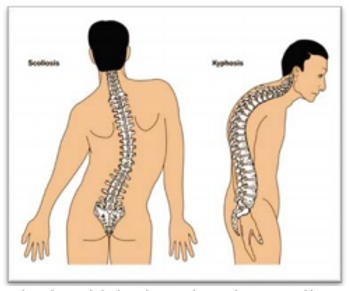Non-Surgical Treatment for Scoliosis: How Chiropractic Care Can Help

Scoliosis is a condition where the spine curves abnormally, often resembling an “S” or “C” shape. It affects both children and adults, causing a variety of symptoms including back pain, muscle fatigue, and difficulty with posture. While surgery is sometimes required in severe cases, many individuals can find relief through non-surgical scoliosis treatment options, particularly chiropractic care. Chiropractic care focuses on spinal health, using natural methods to restore alignment and improve mobility.
Understanding Scoliosis and Its Impact
Scoliosis can develop at any age, though it most commonly appears in children during their growth spurts. While some cases are mild and cause no noticeable symptoms, others can result in significant discomfort and functional limitations. If left untreated, scoliosis can lead to issues such as decreased lung capacity, chronic back pain, and difficulty with balance and coordination. Early intervention is key to managing the condition and preventing these complications.
Non-Surgical Scoliosis Treatment: A Natural Approach
Many individuals with scoliosis seek non-surgical scoliosis treatment options to avoid the risks and long recovery times associated with surgery. Chiropractic care provides a holistic, non-invasive approach to managing scoliosis. Chiropractors focus on spinal alignment and function, making it an ideal treatment for those dealing with the curvature of the spine.
Here are some ways chiropractic care can help with scoliosis:
- Spinal Adjustments: Chiropractors use manual adjustments to correct spinal misalignments. These adjustments can reduce the curvature of the spine and help improve posture. Over time, this can alleviate pressure on nerves, decrease pain, and enhance the body’s overall function.
- Postural Training: Proper posture plays a crucial role in managing scoliosis. Chiropractors educate patients on maintaining good posture, which can prevent the spine from worsening and reduce discomfort. Postural exercises and stretches can also be incorporated into the treatment plan to strengthen the muscles that support the spine.
- Customized Exercise Plans: Chiropractic care often includes specific exercises designed to improve spinal stability and flexibility. These exercises target the muscles surrounding the spine, helping to support proper alignment. For scoliosis patients, strengthening the core and back muscles is essential to reducing pain and preventing the curvature from becoming more severe.
- Massage Therapy: Chiropractic care may also incorporate massage therapy to relax the muscles around the spine. This helps to reduce muscle tension, improve blood circulation, and ease pain associated with scoliosis.
- Lifestyle Recommendations: Chiropractors may recommend lifestyle changes, such as weight management, ergonomic adjustments for sitting, or activity modifications, to help manage scoliosis symptoms. A balanced lifestyle that includes regular physical activity can also improve muscle strength and reduce the risk of scoliosis progression.
The Benefits of Non-Surgical Scoliosis Treatment
One of the main advantages of non-surgical scoliosis treatment is that it’s less invasive and typically requires little to no downtime. Chiropractors provide a personalized treatment plan tailored to the individual’s needs, addressing both the symptoms and the underlying causes of scoliosis.
Chiropractic care can significantly improve quality of life for those with scoliosis, reducing pain, improving mobility, and enhancing posture. For many individuals, chiropractic care offers an effective, non-surgical alternative to invasive procedures and helps avoid the need for surgery.
Conclusion
If you or a loved one is living with scoliosis, non-surgical scoliosis treatment through chiropractic care may be an excellent option. Chiropractors specialize in spinal health and provide natural, non-invasive treatments to help manage the condition. By focusing on spinal alignment, posture, and strength, chiropractic care can reduce symptoms and improve overall function without the need for surgery. Always consult with a healthcare provider to determine the best treatment approach for your specific needs in San Diego, CA.






